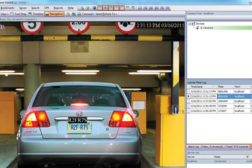Articles by Derek Rice
IP low-light cameras get better and better every day — ever closer to analog cameras in terms of low-light performance.
Read More
Storage Trends in 2012
As customers drive the move to HD and megapixel surveillance video, that shapes the types of storage options as well — up to and including cloud storage.
December 14, 2011
A number of perceptions about PTZs exist within the marketplace. Many of these were valid at one point, and some do continue to be true today. However, there are several misperceptions that should be addressed.
Adjusting PTZ Perceptions
November 1, 2011
The Many Uses for LPR Technologies
License plate capture and recognition involves several different technologies that combine to create a solution for a specific application — and those applications go well beyond tolls and traffic.
September 14, 2011
Powered Up
At the foundation of a well-functioning video surveillance system are the cable, power supplies and media converters.
August 15, 2011
Office & Central Station Software Update
Back-office software can be a dealer’s best friend or their biggest nightmare. Keeping up with its evolution can help ensure the former.
August 15, 2011
Sizing It Up
While the move to HD is good from a video quality standpoint, it poses a number of challenges when it comes to recording and storage. Here’s why.
July 18, 2011
A great image has great value in a security application. Learn how to select a security monitor that gives your customer the best possible image — without overkill.
Worth 1,000 Words
June 22, 2011
Be in the forefront of security intelligence when you receive SDM.
Join over 10,000+ professionals when you subscribe today.
SIGN UP TODAY!Copyright ©2025. All Rights Reserved BNP Media.
Design, CMS, Hosting & Web Development :: ePublishing








